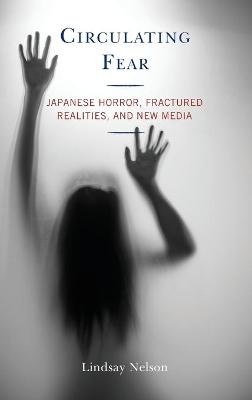
Circulating Fear
Japanese Horror, Fractured Realities, and New Media
Seiten
2021
Lexington Books (Verlag)
978-1-7936-1367-7 (ISBN)
Lexington Books (Verlag)
978-1-7936-1367-7 (ISBN)
This book examines Japanese horror films released from the 2010s to present day, analyzing the function of computers, smartphones, and social media in the narratives, dissemination, and consumption of these films. Lindsay Nelson argues that the multitude of screens creates a sense of fractured reality in contemporary Japanese horror.
[This book] explores the changing role of screens, new media objects, and social media in Japanese horror films from the 2010s to present day. Lindsay Nelson places these films and their paratexts in the context of changes in the new media landscape that have occurred since J-horror's peak in the early 2000s; in particular, the rise of social media and the ease of user remediation through platforms like YouTube and Niconico. This book demonstrates how Japanese horror film narratives have shifted their focus from old media—video cassettes, TV, and cell phones—to new media—social media, online video sharing, and smart phones. In these films, media devices and new media objects exist both inside and outside the frame: they are central to the films’ narratives, but they are also the means through which the films are consumed and disseminated. Across a multitude of screens, platforms, devices, and perspectives, Nelson argues, contemporary Japanese horror films are circulated as an ever-shifting series of images and fragments, creating a sense of “fractured reality” in the films’ narratives and the media landscape that surrounds them. Scholars of film studies, horror studies, media studies, and Japanese studies will find this book particularly useful.
[This book] explores the changing role of screens, new media objects, and social media in Japanese horror films from the 2010s to present day. Lindsay Nelson places these films and their paratexts in the context of changes in the new media landscape that have occurred since J-horror's peak in the early 2000s; in particular, the rise of social media and the ease of user remediation through platforms like YouTube and Niconico. This book demonstrates how Japanese horror film narratives have shifted their focus from old media—video cassettes, TV, and cell phones—to new media—social media, online video sharing, and smart phones. In these films, media devices and new media objects exist both inside and outside the frame: they are central to the films’ narratives, but they are also the means through which the films are consumed and disseminated. Across a multitude of screens, platforms, devices, and perspectives, Nelson argues, contemporary Japanese horror films are circulated as an ever-shifting series of images and fragments, creating a sense of “fractured reality” in the films’ narratives and the media landscape that surrounds them. Scholars of film studies, horror studies, media studies, and Japanese studies will find this book particularly useful.
Lindsay Nelson is assistant professor in the Department of Political Science and Economics at Meiji University.
Acknowledgments
List of Figures
Introduction
Chapter One: Circulating Urban Legends: From 2channel to Toshimaen: The Movie
Chapter Two: Idols, Japanese Horror, and Fractured Realities: Shirome
Chapter Three: The Haunted Forest: Circulating Aokigahara
Chapter Four: From Ringu to Rings: Porous Screens and Virtual Windows in the Later Ringu Films
Conclusion: Living in Virtual Windows
Bibliography
About the Author
| Erscheinungsdatum | 17.08.2021 |
|---|---|
| Verlagsort | Lanham, MD |
| Sprache | englisch |
| Maße | 163 x 227 mm |
| Gewicht | 426 g |
| Themenwelt | Kunst / Musik / Theater ► Film / TV |
| Sozialwissenschaften ► Kommunikation / Medien ► Medienwissenschaft | |
| ISBN-10 | 1-7936-1367-2 / 1793613672 |
| ISBN-13 | 978-1-7936-1367-7 / 9781793613677 |
| Zustand | Neuware |
| Haben Sie eine Frage zum Produkt? |
Mehr entdecken
aus dem Bereich
aus dem Bereich
wie KI und virtuelle Welten von uns Besitz ergreifen – und die …
Buch | Hardcover (2023)
Heyne (Verlag)
CHF 29,90
Eine Einführung
Buch | Softcover (2022)
Springer VS (Verlag)
CHF 46,15


